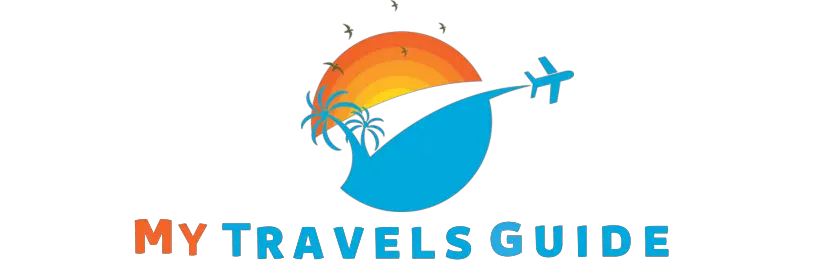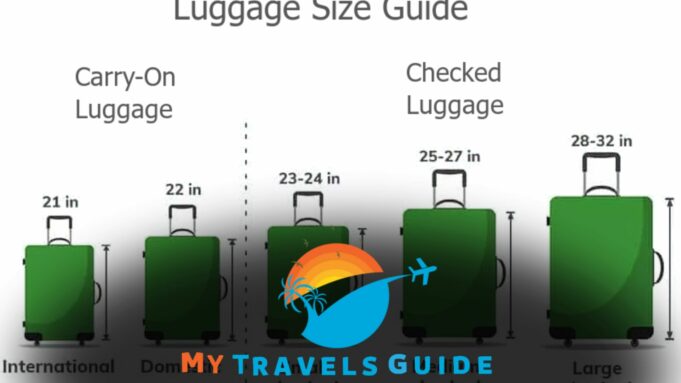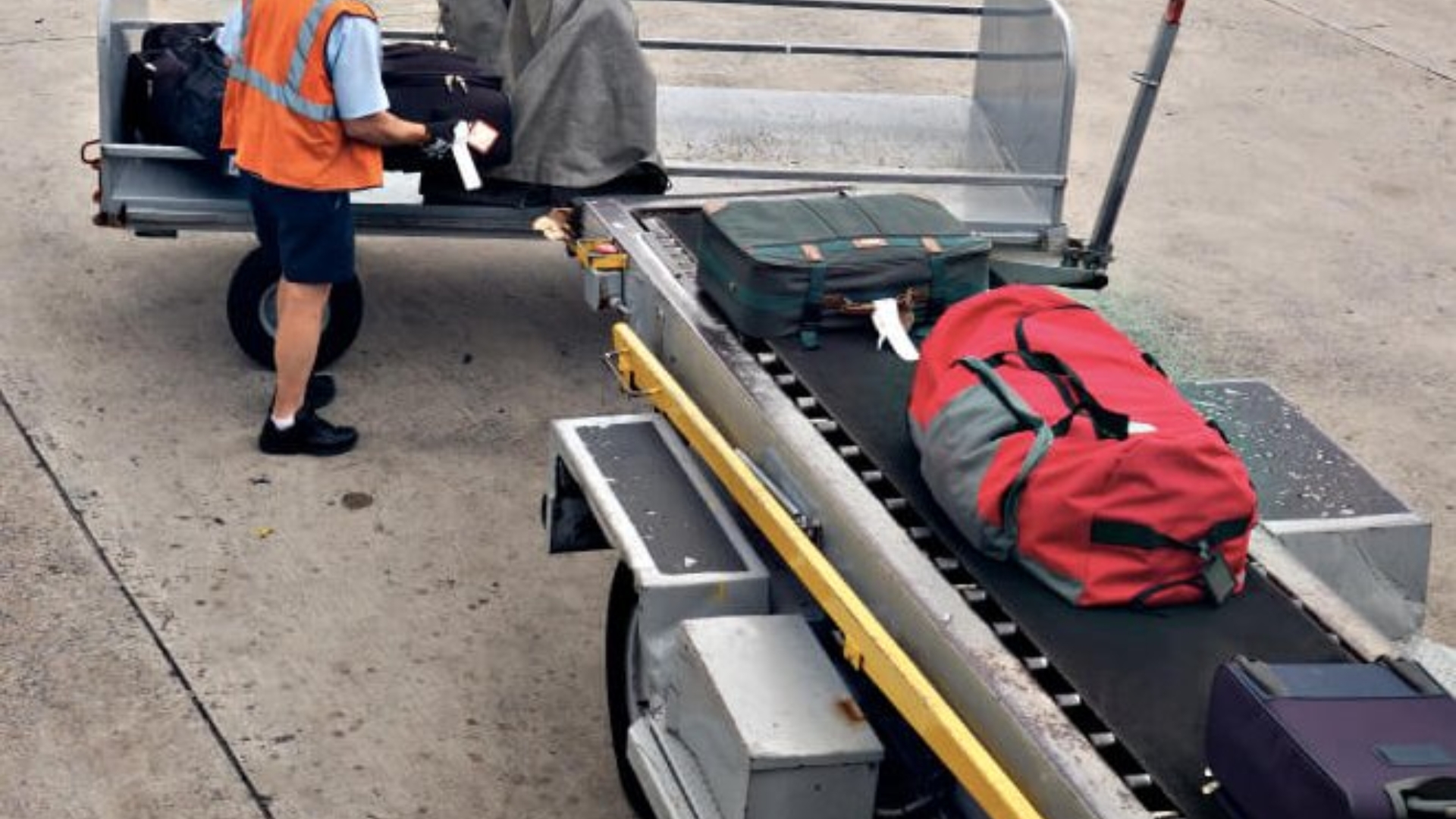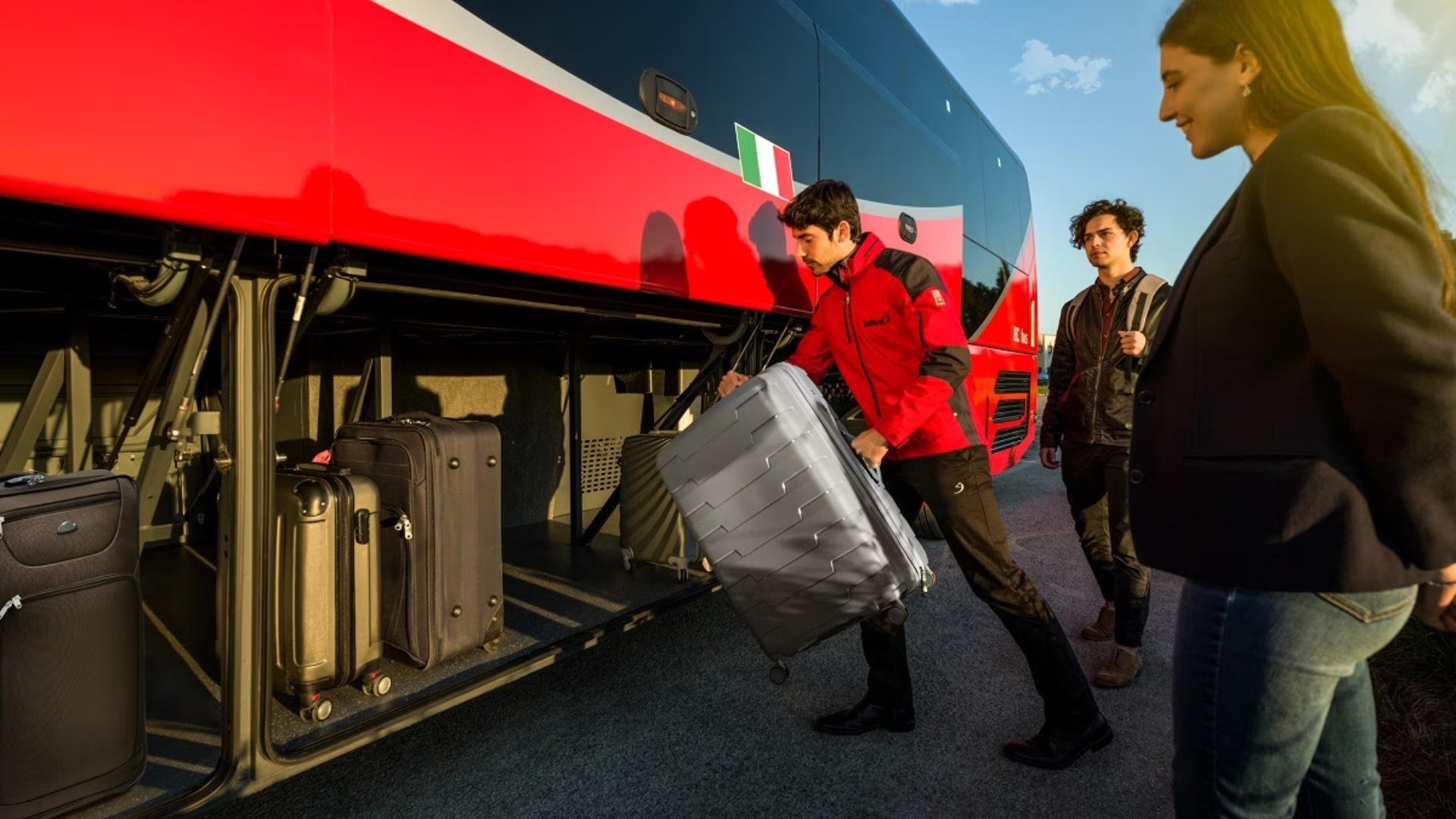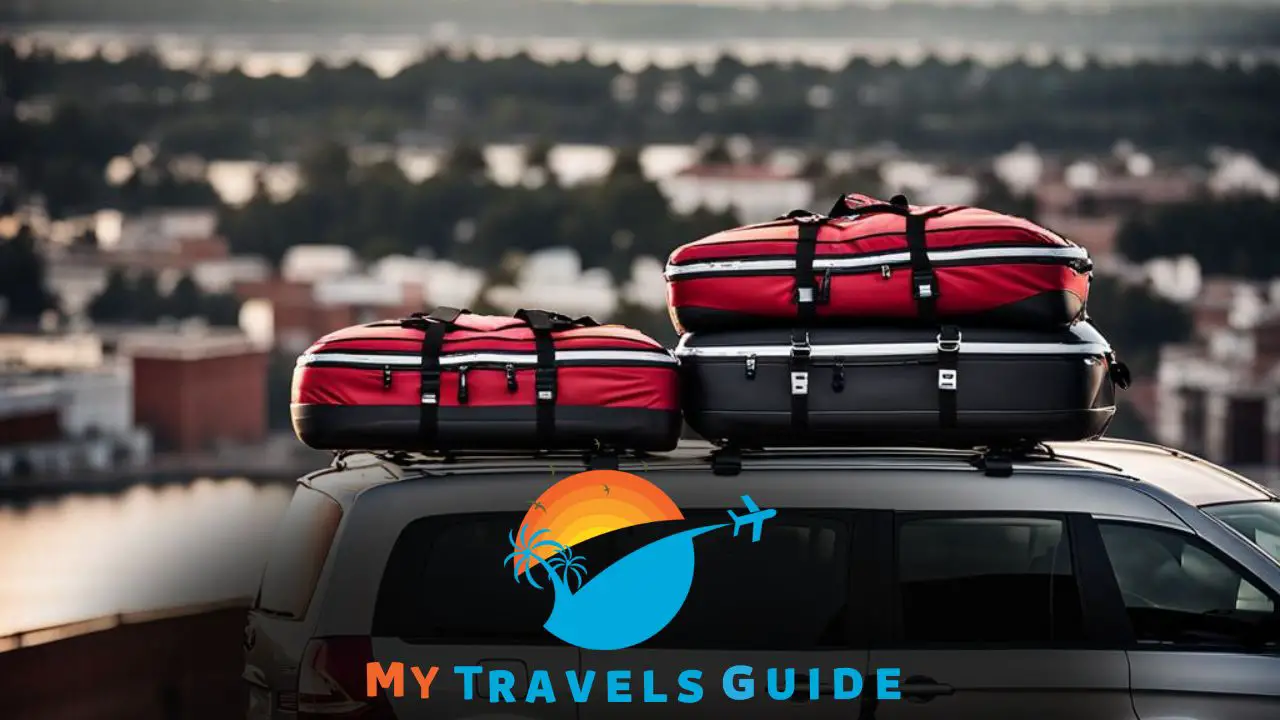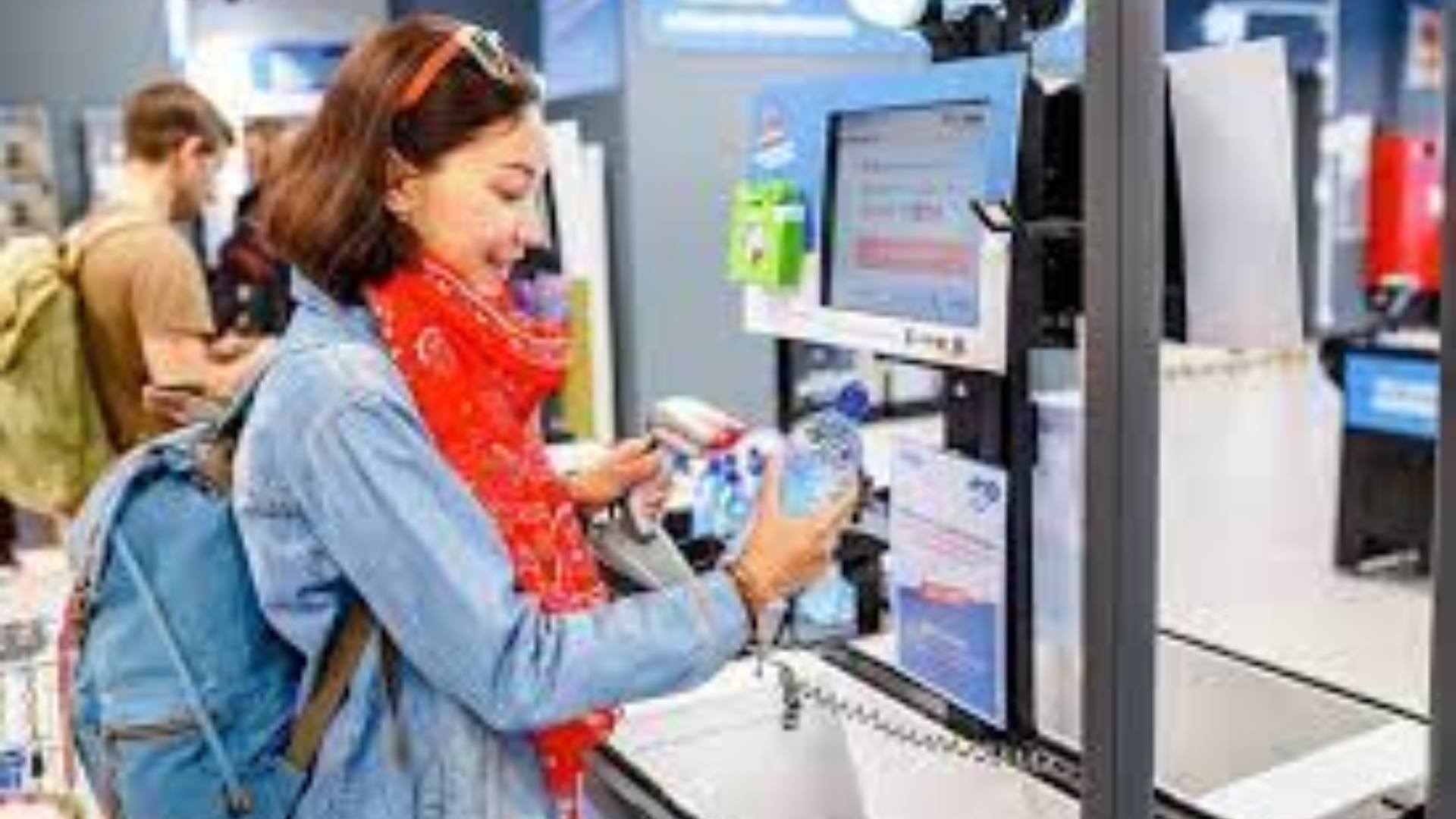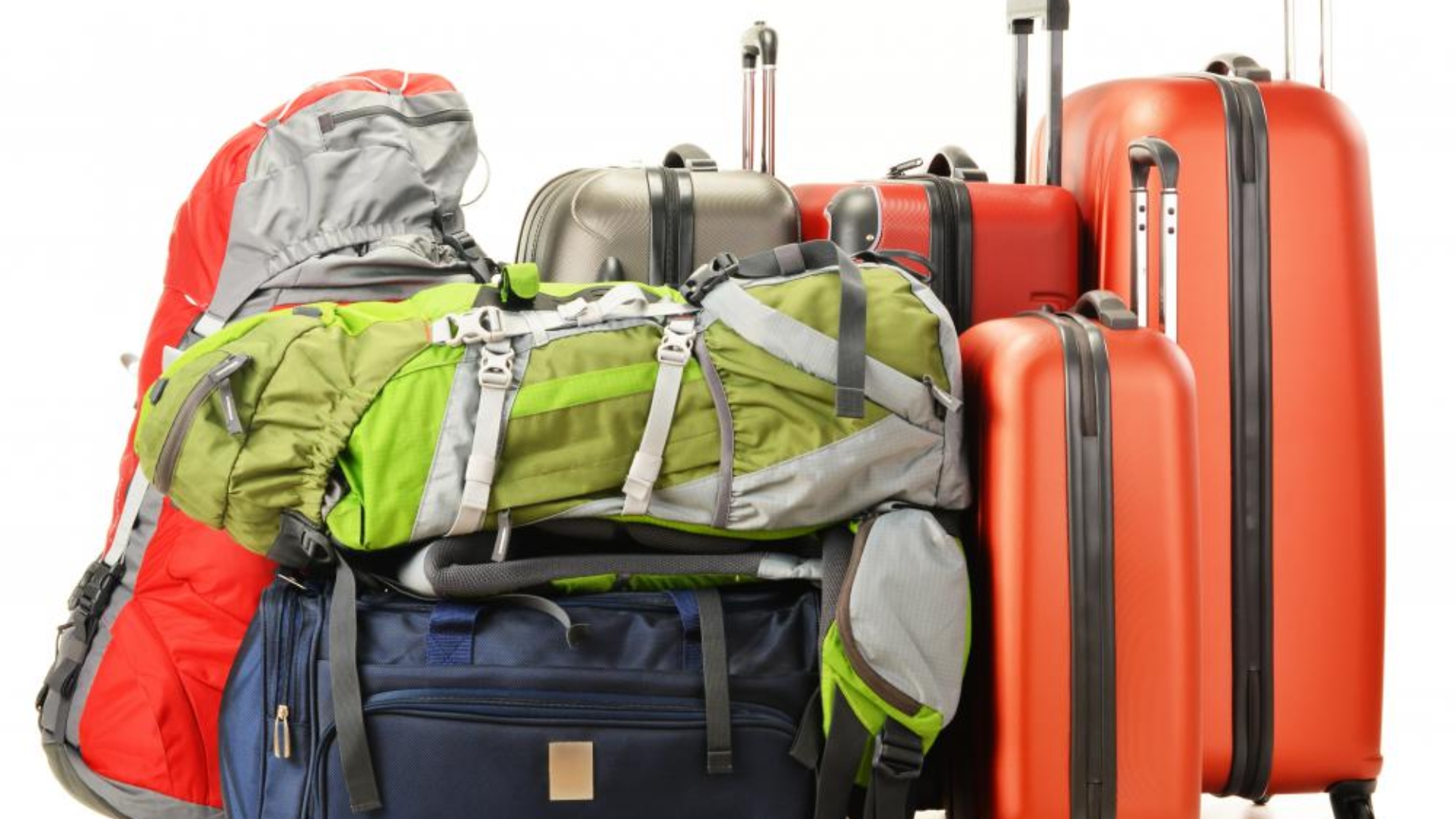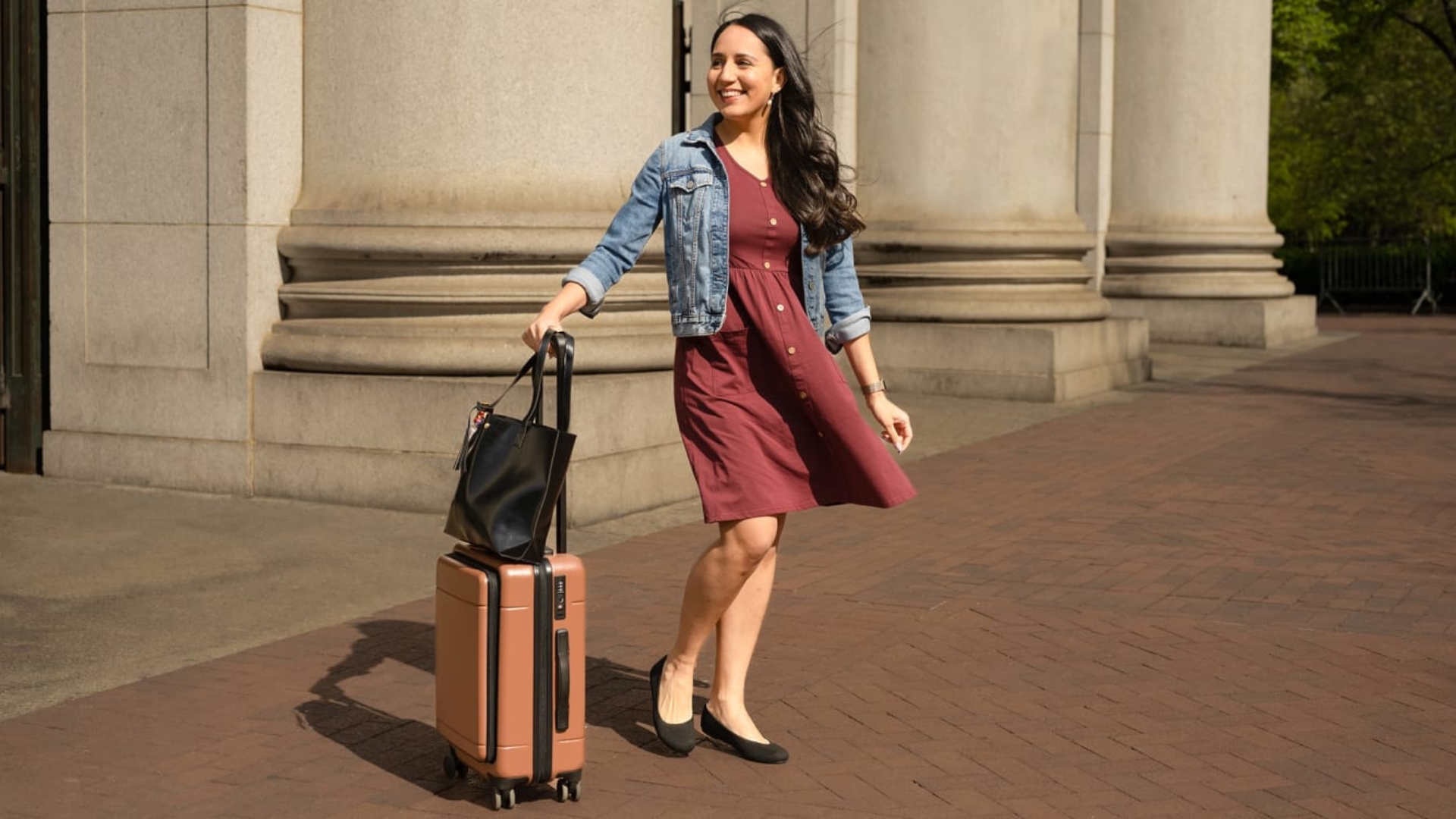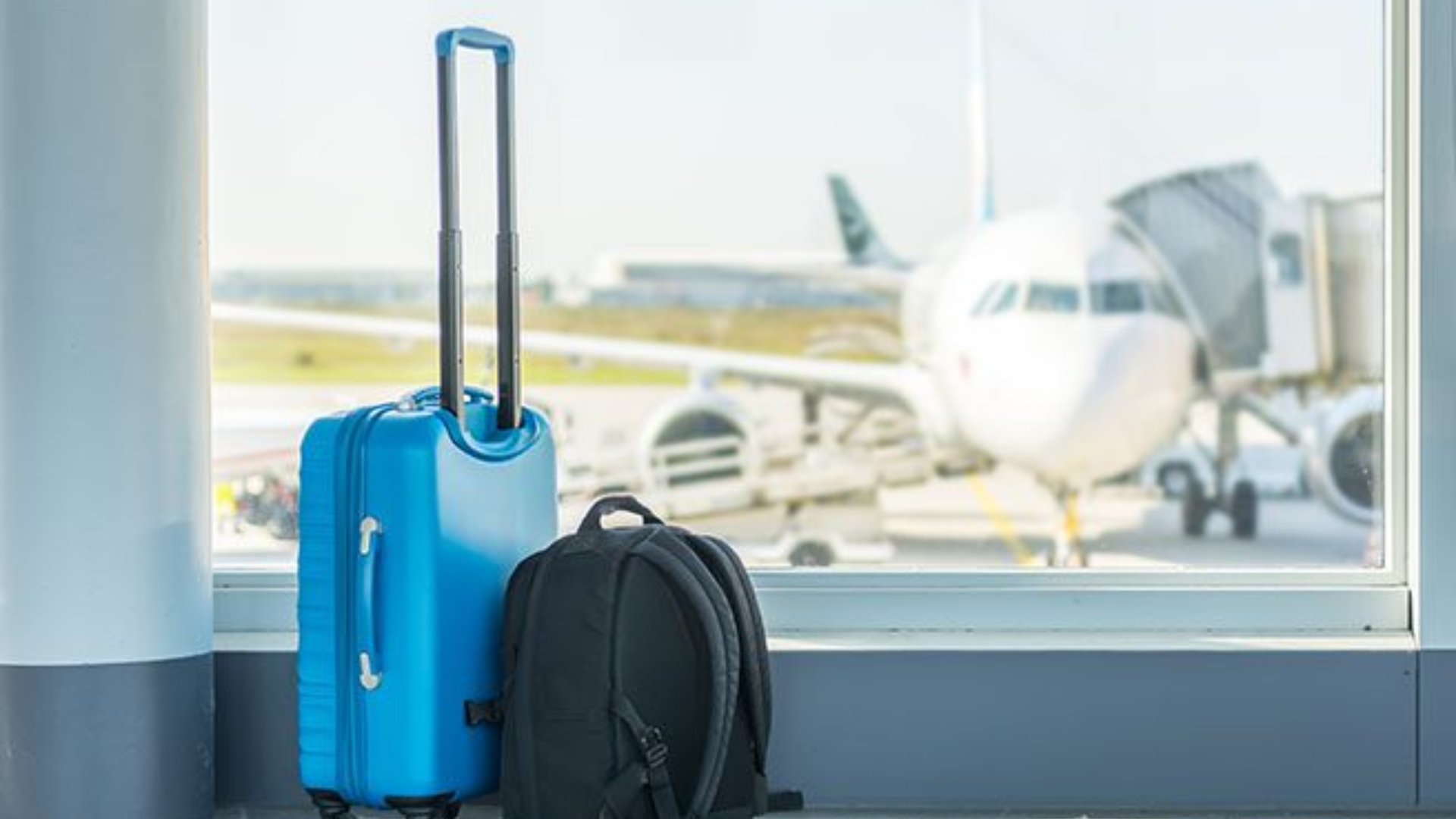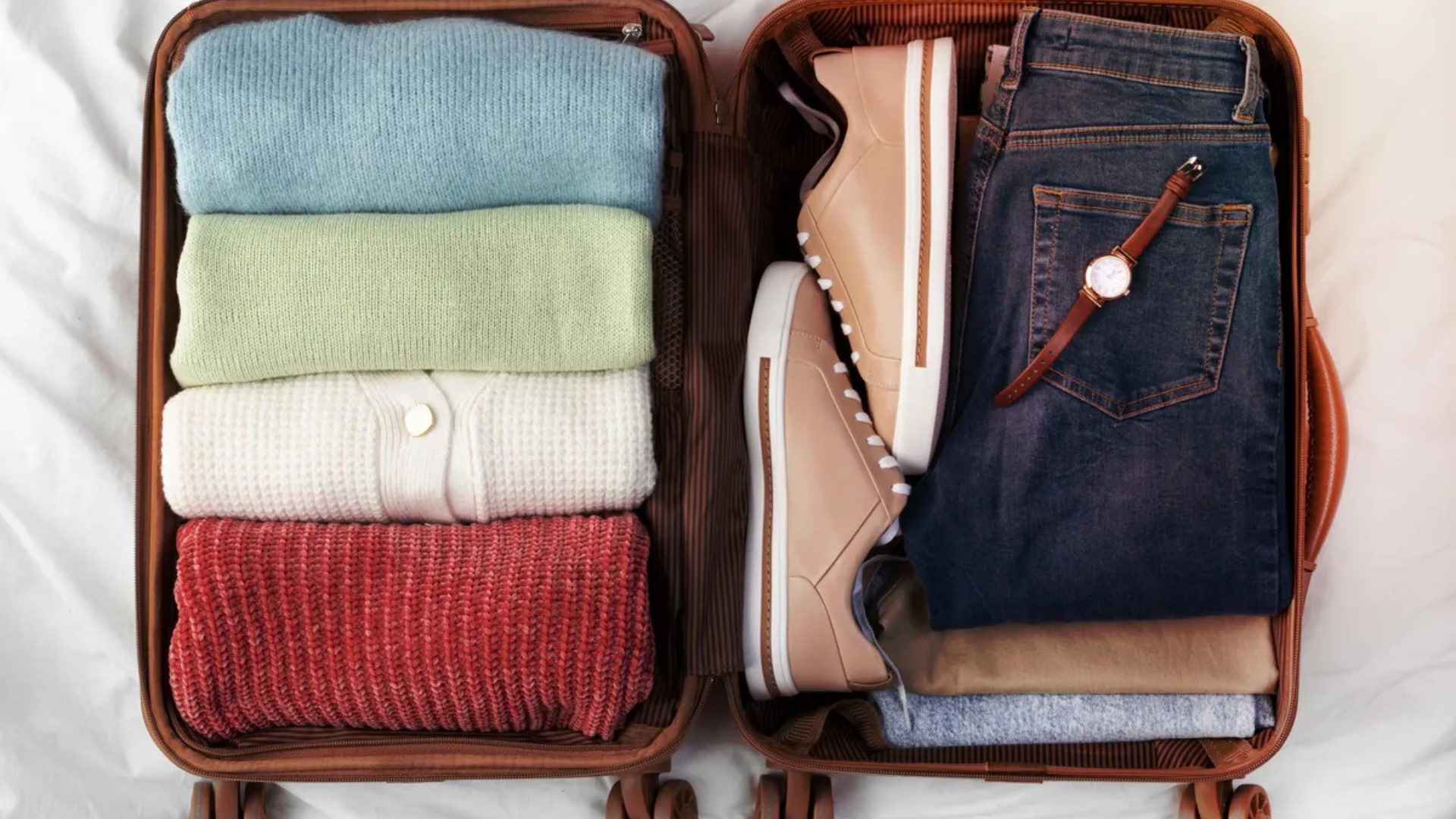In this article:
The size of checked baggage can vary depending on the airline, but most airlines require that your bag be 62 linear inches or less, which means the sum of your bag’s length, width, and height cannot exceed 62 inches.
This measurement includes the wheels and the handle of your luggage. A common size for checked luggage is around 27 x 21 x 14 inches.
However, some airlines may have different size restrictions. For example, United Airlines does not accept bags that measure more than 115 inches (length + width + height).
The weight limit for checked luggage is typically around 50 pounds, but this can also vary depending on the airline and the specific flight.
For instance, American Airlines allows passengers flying to Australia or New Zealand to check bags up to 70 pounds.
It’s important to note that airlines may charge additional fees for oversized or overweight bags. For example, Delta charges $200 per bag within 63”- 80”, and American Airlines charges $150-200 per bag within 62” – 126”.
For international flights, the largest checked luggage size allowed is typically 62 linear inches, and the usual weight limit is 50 pounds.
However, international flights usually give a bigger free checked baggage allowance, and the exact allowance can vary depending on the airline and the specific flight.
If you’re planning to fly with Allegiant Air, you might be wondering, ‘How strict is Allegiant Air with carry-on size?’ We delve into the airline’s policies to give you a clear understanding.
Check in Luggage Size Chart
| Airline | Size | Weight |
|---|---|---|
| Allegiant Airlines. | Maximum of 80 inches (length + width + height). | 50 pounds. |
| Alaska Airlines. | Maximum of 62 inches (length + width + height). | 50 pounds. |
| American Airlines. | Maximum of 62 inches (length + width + height). | 50 pounds. (may differ based on cabin and elite status). |
| Delta Air Lines. | Maximum of 62 inches (length + width + height). | 50 pounds. (may differ based on cabin and elite status). |
| Frontier Airlines. | Maximum of 62 inches (length + width + height). | 40 pounds. |
| Hawaiian Airlines. | Maximum of 62 inches (length + width + height). | 50 pounds. |
| JetBlue Airways. | Maximum of 62 inches (length + width + height). | 50 pounds. (may differ based on cabin and elite status). |
| Southwest Airlines. | Maximum of 62 inches (length + width + height). | 50 pounds. |
| Spirit Airlines. | Maximum of 62 inches (length + width + height). | 40 pounds. |
| United Airlines. | Maximum of 62 inches (length + width + height). | 50 pounds. (may differ based on cabin and elite status). |
How to Measure Luggage Size
To measure the size of your luggage, you will need a measuring tape or a yardstick. Here are the steps to follow:
- Place the suitcase on the floor: Ensure the suitcase is upright, with the wheels at the bottom and the handle at the top.
- Measure the height: Measure the height of the suitcase from the ground to the top of the carry handle. This includes the wheels and the handle of your luggage.
- Measure the length: The length of the luggage is measured at its largest points, including wheels and pockets.
- Measure the width: The width is measured at the widest part of the suitcase, which includes wheels and pockets.
- Calculate the linear dimensions: Add the length, width, and height measurements together. The total is your linear measurement and the sum airlines use to determine if your luggage meets their size restrictions.
Remember to measure your luggage after it’s fully packed, as an overstuffed bag might expand and exceed the standard size.
If you’re measuring a duffel bag, be careful not to push down too hard on the bag, as that can give you an inaccurate measurement.
When to Use Checked Bags?
When deciding whether to use checked baggage for air travel, there are several factors to consider. Here are some reasons why you might opt to check your luggage:
- Airline Charges for Carry-Ons: Some airlines charge for carry-on bags, making it more cost-effective to check your luggage.
- Long Layovers: If you have a long layover, checking your bags can lighten your load and make the wait more comfortable.
- Avoiding Long Security Lines: Checked luggage can sometimes help you avoid longer lines at security checkpoints.
- Avoiding Priority Boarding Fees: If you don’t want to pay for priority boarding, which often includes overhead bin space for carry-on, checking your bag can be a good alternative.
- Mandatory Checking: Airway officials may sometimes require you to check your carry-on luggage, especially when overhead bin space runs out.
- Traveling with Gifts: Checked luggage can be more convenient during the holiday or when carrying gifts.
- Packing More or Bulky Items: For longer trips or when you need to bring more items, checked luggage allows you to pack more without worrying about carry-on restrictions.
- Carrying Prohibited Items: Some items are not allowed in carry-on luggage but can be transported in checked bags.
However, there are also downsides to checking bags, such as the potential for lost luggage, additional fees for overweight or oversized bags, and the need to wait at baggage claim upon arrival.
It’s important to weigh these factors and consider the specific policies and fees of the airline you’re flying with. Always check your airline’s baggage policies before your trip to make an informed decision and avoid unexpected fees or issues at the airport.
Embark on stress-free journeys by familiarizing yourself with airlines’ checked baggage size policies. In this article, discover the ideal dimensions for hassle-free travel and avoid any last-minute surprises at the airport.
How to Get Free Checked Luggage
To obtain free checked luggage when flying, you can use several strategies:
- Choose Airlines with No Checked Bag Fees: Some airlines, like Southwest Airlines, allow passengers to check bags for free up to certain limits. Southwest, for example, lets customers check two bags for free.
- Earn Elite Status: Attaining elite status with an airline often comes with perks, including free checked bags. This can be achieved by flying frequently with the same airline or alliance.
- Use the Right Airline Credit Card: Many airline credit cards offer free checked bags as a benefit. For instance, certain Delta SkyMiles and JetBlue credit cards provide a free first checked bag for the cardholder and companions on the same reservation.
- Book Premium Cabins: Passengers flying first or business class typically receive free checked bags as part of their fare.
- Military Benefits: Active-duty military personnel often receive free checked bags when flying, but it’s important to check with the airline and be prepared to show military identification.
- Travel to Certain Destinations: Some airlines waive checked bag fees for all customers on flights to specific destinations. For example, American Airlines allows all customers to check a free bag on flights to certain international destinations.
- Leverage Frequent Flyer Programs: Joining an airline’s frequent flyer program can offer free checked bags, especially if you accumulate enough points or miles.
- Check Bag at the Gate: If your flight is full, airline employees may offer free gate bag checks to make room for carry-on luggage.
Uncover the ultimate dimensions for check-in luggage as we explore the largest luggage size in centimeters. Ensure your bags meet the requirements for a smooth and worry-free check-in process.
Carry On Bag Size and Dimensions
The size and dimensions of carry-on bags are generally consistent across many airlines, with the standard domestic carry-on luggage size being 22 inches long, 14 inches wide, and 9 inches high, including handles and wheels.
This size limit ensures that bags can be safely stored in the overhead bin during your flight.
For international flights, the carry-on size is often slightly smaller, with many airlines allowing a maximum size of 21 inches or less to ensure compatibility with various carriers and aircraft types.
It’s important to note that while these are common dimensions, specific airlines may have their restrictions, and it’s always best to check with the airline you are flying with to confirm their carry-on luggage size and weight limits.
There are no standard weight restrictions for carry-on luggage, but some airlines may impose their own limits.
Here are some examples of carry-on luggage size limits by airline:
- Alaska Airlines: 22″ x 14″ x 9″
- American Airlines: 22″ x 14″ x 9″
- Southwest Airlines: 24″ x 16″ x 10″
- United Airlines: 22″ x 14″ x 9″
- Spirit Airlines: 22″ x 18″ x 10″
Remember to consider the size of your item, which is typically smaller than your carry-on bag and must fit under the seat in front of you.
The dimensions for personal items can vary but are generally around 18 inches long, 14 inches wide, and 8 inches high.
Always verify the carry-on and personal item size restrictions with your airline before traveling to avoid any inconvenience or additional fees.
